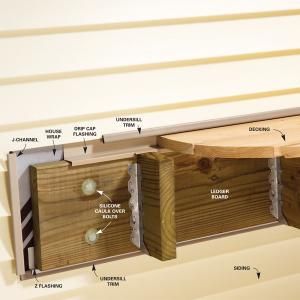Flashing As Siding

Flashing is a strip of metal usually aluminum about 8 inches long and bent at 90 degrees with each side at least 5 inches wide.
Flashing as siding. Position the flashing lengths as defined in step 2 overlapping the ends a minimum of 2 inches onto the previous flashing piece and securing the flashing with 8d nails at each wall stud. Install the water resistant barrier to overlap the top edge of the weep screed. Stucco cladding install self adhesive flashing behind the weep screed a perforated metal strip at the base of the exterior walls at the height above grade specified by the local building code. On a wall to be covered with wood cement board vinyl or metal.
The solution to rotting sidewalls is a small piece of bent metal called a kickout flashing at roofing suppliers which simply directs all that water away from the wall. With the flashing in place let s see what happens. Siding is the first line of defense against water intrusion and the multitude of problems it causes including the dreaded mold. Building siding flashing finish details for building corners use overlapping 1x4s or 1x6s at outside corners or use 5 4 stock for a heavier look.
The water then runs off the flashing because it can t go up the flashing as it extends up behind the siding. Install the lathe and stucco to the first bend in the weep screed. The water runs down the siding and at the bottom of the first row of vinyl siding it drips off and contacts the metal flashing as it runs across the top of the fascia board. This has proven problematic over time as caulking the joint results in unsightly surface appearances due to the different textures as well as resulted.
A common problem with cement board siding products and some other types of horizontal lap siding is that older installation guidelines called for caulking the joint instead of flashing the joint. Even if the roof has been properly flashed against the sidewall this one hasn t water can still run down the side of the house and behind the siding causing rot.














































